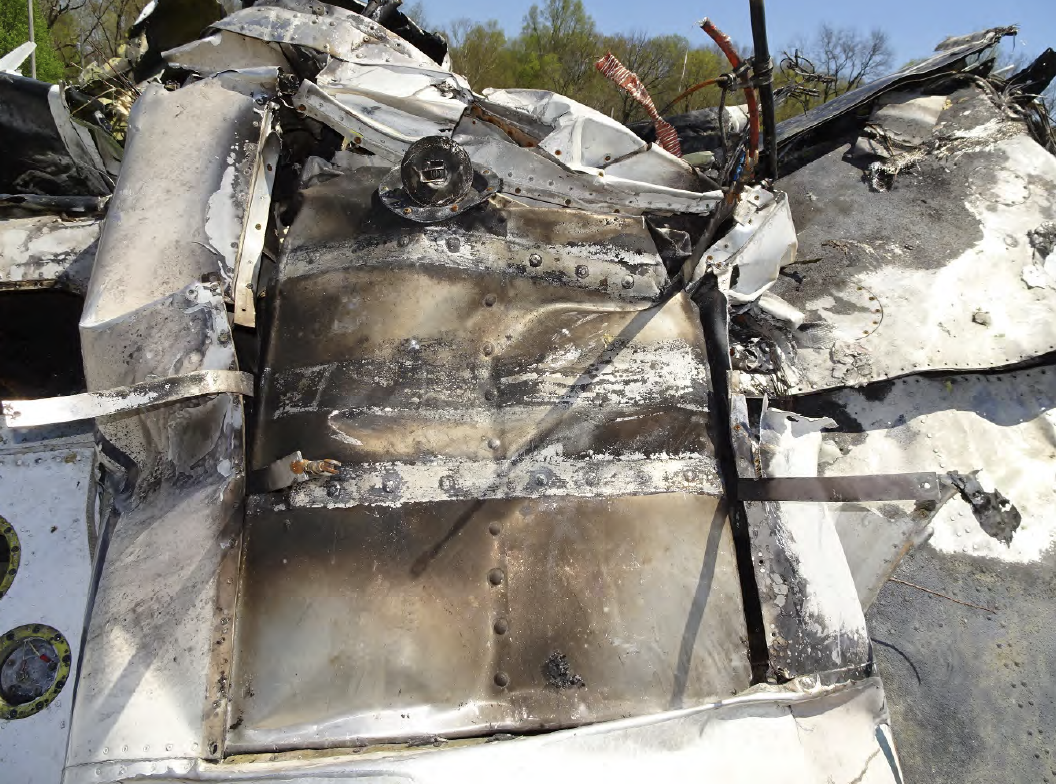
Editor's note: This is the second in a three-part article. Here's part one.
According to detailed recordings of air traffic control voice communications, the pilot of the Piper Navajo Chieftain contacted ATC at 1503 to request direct routing to his base of operations due to a fuel problem. The air traffic controller advised the pilot to proceed as requested and offered an airport that was just 8 mi. ahead as a landing alternative. The pilot responded that he had that field in sight but wanted to continue to his home field, which was 30 mi. away.
The controller then asked the pilot if he wanted to declare an emergency, and the pilot responded "negative." About 1505, when the airplane was at 5,000 ft. MSL, the controller asked the pilot if he required any assistance with the fuel issue, and the pilot responded that he should be "OK." The controller then advised the pilot that "multiple airports" were available between his location and his destination, and the pilot informed the controller that he would advise if the fuel issue developed again.
About 1513, the pilot established radio contact with his home field tower and advised the controller that the airplane had a fuel problem and that he was hoping to reach the airport. At that time, the airplane was at an altitude of 1,850 ft. MSL and about 8 mi. north. Shortly thereafter, the pilot advised the controller that he was unsure if the airplane would reach the airport. No further communications were received from the pilot.
Radar data showed that, between 1513 and 1516, the ground track of the Chieftain was about 200 deg., the airplane descended to an altitude of 1,275 ft. MSL, and its estimated ground speed decreased from about 140 kt. to 98 kt. At 1516, the radar data depicted a right turn to a heading of about 250 deg. and a ground track that aligned with a golf course fairway (which had an elevation of 865 ft. MSL). At 1516:27, radar data indicated that the airplane was about 180 ft. from the fairway at an altitude of 1,050 ft. MSL and an estimated ground speed of about 82 kt. The airplane's last radar-recorded position was located about 550 ft. from the accident site. No additional radar data were recorded.
According to witnesses, the airplane engine sputtered before making two loud "pop" or "backfire" sounds. One witness reported that, after sputtering, the airplane "was on its left side flying crooked." Another witness reported that the "unusual banking" made the airplane appear to be flying "like a 'stunt' in an air show."
If I may conjecture, the fuel system was complex, but workable. It wasn’t until the pressure of suddenly noticing that the aircraft was much lower on fuel than thought was added to the situation, and probably the confusion over whether that had been his fault for working the system incorrectly or not noticing that the fuel was depleting faster than planned, that the complexity of that system appears to have begun to take its effect. The pilot’s attention became tunnel-focused on fuel. Finally, with almost 100% of his attention on that fuel situation, the aircraft ran out of fuel, most likely on one engine, and he lost control of the airplane.
The NTSB doesn’t deal in conjecture, however--just facts. It determined the probable cause(s) of this accident to be: fuel starvation to the left engine and the resulting loss of engine power to that engine, as well as a loss of airplane control due to the pilot's failure to maintain the minimum controllable airspeed.





